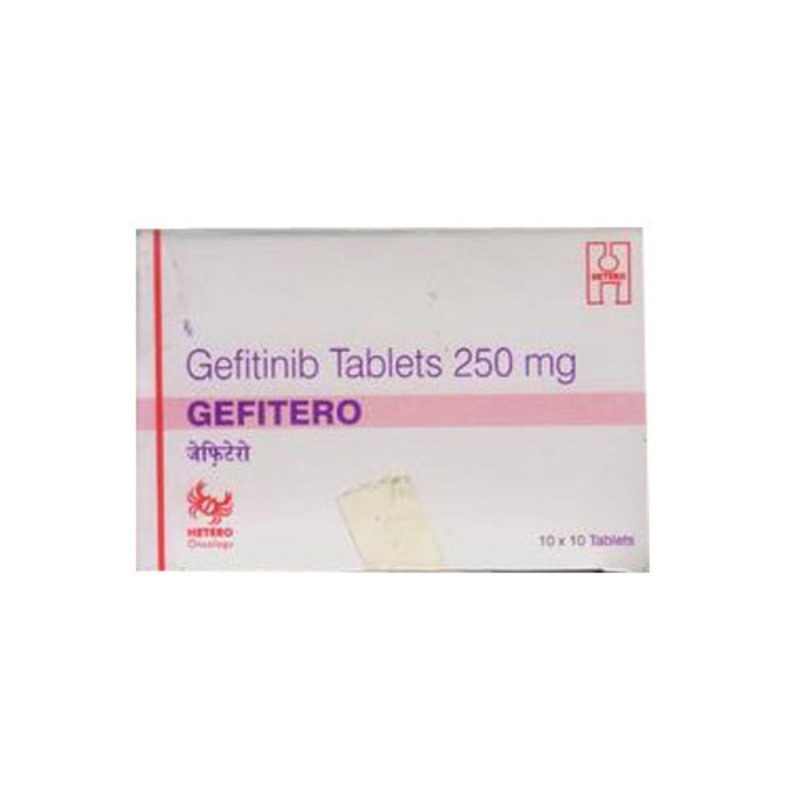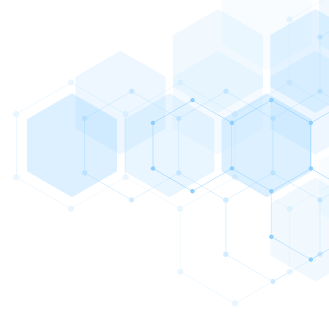DESCRIPTION
Mechanism of Action
• Potent and selective small-molecule inhibitor of the EGFR tyrosine
kinase, resulting in inhibition of EGFR autophosphorylation and
inhibition of EGFR signaling.
• Inhibition of the EGFR tyrosine kinase results in inhibition of critical
mitogenic and antiapoptotic signals involved in proliferation, growth,
metastasis, angiogenesis, and response to chemotherapy and/or radiation
therapy.
Mechanism of Resistance
• Mutations in the EGFR tyrosine kinase leading to decreased binding
affinity to gefitinib.
• Presence of KRAS mutations.
• Activation/induction of alternative cellular signaling pathways, such
as PI3K/Akt and IGF-1R.
Absorption
Oral absorption is relatively slow, and the oral bioavailability is approximately
60%. Food does not affect drug absorption.
Distribution
Extensive binding (90%) to plasma proteins, including albumin and
α1-acid glycoprotein, and extensive tissue distribution. Steady-state drug
concentrations are reached in 7–10 days.
Metabolism
Metabolism in the liver primarily by CYP3A4 microsomal enzymes.
Other cytochrome P450 enzymes play a minor role in its metabolism. The
main metabolite is the O-desmethyl piperazine derivative, and this metabolite
is significantly less potent than the parent drug. Elimination is mainly
hepatic with excretion in the feces, and renal elimination of the parent drug
and its metabolites accounts for less than 4% of an administered dose. The
terminal half-life of the parent drug is 48 hours.
Indications
Treatment of NSCLC that is refractory to platinum-based chemotherapy
and/or second-line docetaxel therapy. FDA-approved for patients who are
currently receiving and benefiting or who have previously received and
 benefited from gefitinib treatment.
Dosage Range
Recommended dose is 250 mg/day PO.
Drug Interaction 1
Dilantin and other drugs that stimulate the liver microsomal CYP3A4
enzyme, including carbamazepine, rifampin, phenobarbital, and St. John’s
Wort—These drugs increase the rate of metabolism of gefitinib, resulting in
its inactivation.
Drug Interaction 2
Drugs that inhibit the liver microsomal CYP3A4 enzyme, including
ketoconazole, itraconazole, erythromycin, and clarithromycin—These drugs
decrease the rate of metabolism of gefitinib, resulting in increased drug
levels and potentially increased toxicity.
Drug Interaction 3
Warfarin—Patients receiving coumarin-derived anticoagulants should be
closely monitored for alterations in their clotting parameters (PT and INR)
and/or bleeding as gefitinib inhibits the metabolism of warfarin by the liver
P450 system. Dose of warfarin may require careful adjustment in the presence
of gefitinib therapy.
Special Considerations
1. Clinical responses may be observed within the first week of initiation
of therapy.
2. Patients with bronchoalveolar NSCLC may be more sensitive to
 gefitinib therapy than other histologic subtypes. Females and
 nonsmokers also show increased sensitivity to gefitinib therapy.
3. Closely monitor patients with central lesions as they may be at
increased risk for complications of hemoptysis.
4. Dose of gefitinib may need to be increased when used in patients
with seizure disorders who are receiving phenytoin, as the metabolism
of gefitinib by the liver P450 system is enhanced in the  presence
of phenytoin.
5. Coagulation parameters (PT/INR) should be closely monitored when
patients are receiving both gefitinib and warfarin, as gefitinib inhibits
the metabolism of warfarin by the liver P450 system.
6. In patients who develop a skin rash, topical antibiotics such as
clindamycin gel or either oral clindamycin and/or oral minocycline
may help.
7. Avoid Seville oranges, starfruit, pomelos, grapefruit, and grapefruit
juice while on gefinitib.
8. Pregnancy category D. Breastfeeding should be avoided.
Toxicity 1
Elevations in blood pressure, especially in those with underlying hypertension.
Toxicity 2
Pruritus, dry skin with mainly a pustular, acneiform skin rash.
Toxicity 3
Mild-to-moderate elevations in serum transaminases. Usually transient
and clinically asymptomatic.
Toxicity 4
Asthenia and anorexia.
Toxicity 5
Mild nausea/vomiting and mucositis.
Toxicity 6
Conjunctivitis, blepharitis, and corneal erosions. Abnormal eyelash
growth may occur in some patients.
Toxicity 7
Rare episodes of hemoptysis and GI hemorrhage.
SPECIFICATION


Login To Comment